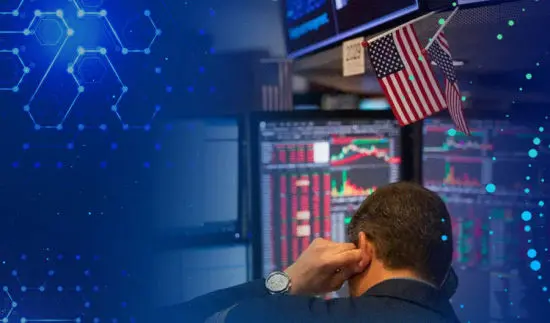Last year, nearly every sector of the economy was affected by rising prices as the
United States faced high inflation.
The overall increase in prices - measured by
the consumer price index - was 9.1% for the 12 months ending June 2022. Although
inflation is lower now - the CPI increased by 3% over the 12 months through June
2023 - the impact on consumers varies based on their individual expenses.
You can
use this inflation calculator to see how prices are changing (2023 data is through
April 30):
What is inflation?
Inflation is the gradual loss of purchasing
power over time as prices rise. It is usually expressed as a percentage and
typically refers to a prolonged trend of increasing prices across various sectors,
affecting common household expenses such as food and energy.
Those who rent and
spend a significant portion of their income on basic necessities are often the first
to feel the impact of inflation on their budgets. Rising costs associated with
inflation can be immediately observable, whether at the gas pump or the grocery
store, or they can take the form of "shadow inflation," in which the quantity or
quality of goods decreases even though prices remain relatively stable.
In
addition to low-income individuals, those who do not own stocks are particularly at
risk.
"In a moderately inflationary environment, it's even more important to get
your money working for you in the stock market," says Alice Finn, founder of
PowerHouse Assets and author of "Smart Women Love Money."
Historical Inflation
Rates
Economists often rely on the CPI, which measures the average change
over time in the prices paid by urban consumers for a market basket of consumer
goods and services, to track historic rates of inflation.
Since the CPI's
creation, the annual percentage change in the index was a historic high of 17.8% in
1917. More recently, during a period of particularly high inflation in the 1970s and
1980s, inflation hit its annual high of 13.5% in 1980.
When evaluating
inflation rates, keep in mind CPI measurements of inflation tend to slightly lag
immediate economic conditions.
"The CPI index is designed to try to capture
the cost of living for households. It’s never going to be a perfect measure," says
Andrew Hunter, deputy chief economist at Capital Economics. "Housing is a very big
part of the CPI index, a big driver of the inflation figures. It tends to, as far as
the official BLS measure, be very slow moving."
"After rising very sharply
over the past couple of years, housing inflation is now slowing according to the
CPI, but this is definitely an area where that won’t necessarily reflect what
households are actually experiencing,” Hunter says.
Inflation Today
The
annual rate of inflation as of June, according to the CPI, is 3% over last year.
According to the PCE, the rate of inflation is 3.8% over the last year as of May
2023.
“Broadly measured, inflation is down considerably compared to what we
were seeing last year,” says Andy Baxley, senior financial planner at The Planning
Center in Chicago.
"We’re finally seeing positive real returns on certain
high-yield savings and money market accounts, which is a welcome change. With the
worst of inflation hopefully in the rearview (for now), we can all breathe a sigh of
relief. That said, we shouldn’t expect prices on goods and services to return to
pre-COVID levels. We are seeing price declines in certain categories compared to
last year, but in general, we should expect a cooling off of the rate of inflation,
not widespread deflation. Consumers waiting for prices to come down before making a
big purchase may be disappointed,” he adds.
Energy
The average price of
gas decreased by 26.5% over the last 12 months ending June 2023, according to the
CPI, after rising 43.6% for the 12 months ending April 2022.
"We’ve just
lived through several years of elevated inflation,” Zimmerman says.
Zimmerman
also says that early on in the cycle, labor shortages led to supply shocks, which
drove up the price of household appliances, lumber and automobiles. As the economy
emerged from lockdown, people began to increase personal consumption, once again
going out to restaurants, taking vacations and hosting large social events like
weddings that had been delayed by the pandemic.
This increase in demand drove
up the prices of flights, hotel rooms and consumer discretionary goods, Zimmerman
says. And this shift in the underlying cause of inflation led the Federal Reserve to
embark upon an aggressive monetary policy designed to help cool
demand.
"We’re now starting to see the impact of the Fed’s actions, but we
expect prices will remain high because so much new money was printed during the
pandemic that it has diluted the value of our existing dollars, leading to
permanently higher nominal prices,” he says.
Inflation Calculator: See How Much Inflation Is Costing You
Advertisement
Similar Posts

Quick Money Boost: Earn $1000 in a Week

10 Steps to a Million-Dollar Retirement Plan

Charles Schwab's 7 most explosive mutual funds - transform your investment
portfolio!.

The Top 10 Most Valuable Automobile Brands in the World.

10 of the Best Stocks to Buy for 2023

Best Bad Credit Loans of October 2023

Is it true that 0 investment has high returns?

There are solutions to overdue loans

Saving money this way is safe<

Buying bank wealth management is not easy to lose money?

How to Make Money as a Teen

12 Best Websites to Make Money Online

7 Best Money Market Funds to Buy for Safety

How to Save Money: 14 Expert-Backed Ways

6 Key Financial Considerations for Unmarried Couples
